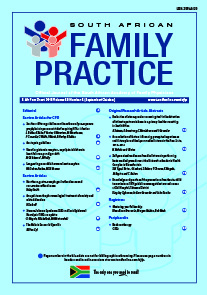Southern African guidelines on the safe use of pre-exposure prophylaxis in persons at risk of acquiring HIV-1 infection
Keywords:
Southern African guidelines, safe use, pre-exposure prophylaxis, HIV-1 infection
Abstract
The Southern African HIV Clinicians Society published its first set of oral pre-exposure prophylaxis (PrEP) guidelines in June 2012 for men who have sex with men (MSM) who are at risk of HIV infection. With the flurry of data that has been generated in PrEP clinical research since the first guideline, it became evident that there was a need to revise and expand the PrEP guidelines with new evidence of safety and efficacy of PrEP in several populations, including MSM, transgender persons, heterosexual men and women, HIV-serodiscordant couples and people who inject drugs. This need is particularly relevant following the World Health Organization (WHO) Consolidated Treatment Guidelines released in September 2015. These guidelines advise that PrEP is a highly effective, safe, biomedical option for HIV prevention that can be incorporated with other combination prevention strategies in Southern Africa, given the high prevalence of HIV in the region. PrEP should be tailored to populations at highest risk of HIV acquisition, whilst further data from studies in the region accrue to guide optimal deployment to realise the greatest impact regionally. PrEP may be used intermittently during periods of perceived HIV acquisition risk, rather than continually and lifelong, as is the case with antiretroviral treatment. Recognition and accurate measurement of potential risk in individuals and populations also warrants discussion, but are not extensively covered in these guidelines.
Section
Review Articles
By submitting manuscripts to SAFP, authors of original articles are assigning copyright to the South African Academy of Family Physicians. Copyright of review articles are assigned to the Publisher, Medpharm Publications (Pty) Ltd, unless otherwise specified. Authors may use their own work after publication without written permission, provided they acknowledge the original source. Individuals and academic institutions may freely copy and distribute articles published in SAFP for educational and research purposes without obtaining permission.

